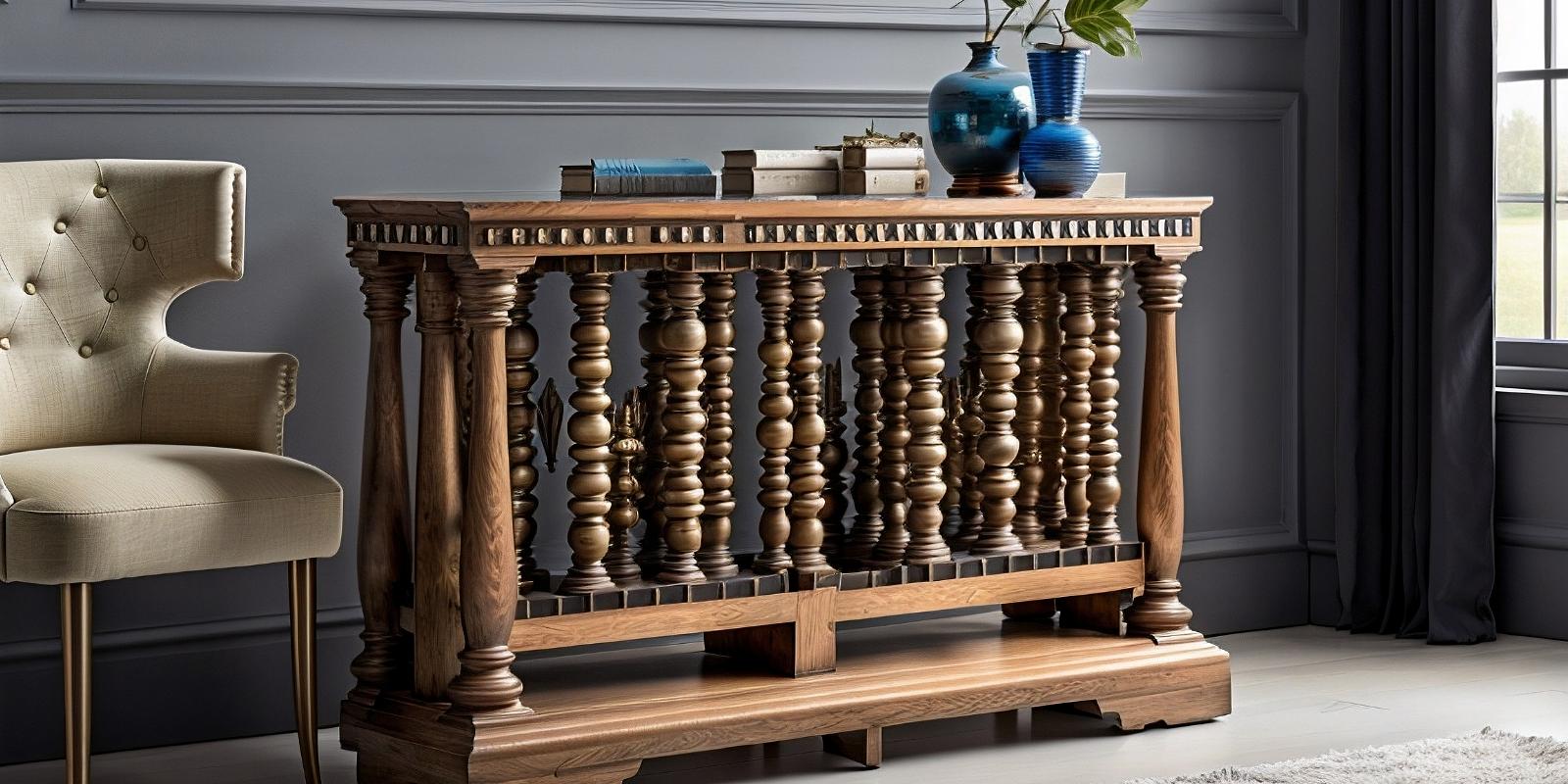What is the meaning of the furniture term Abacus?
Answer:
In the context of furniture, an abacus refers to a small slab or board located below the topmost part of a column in classical architecture. It serves as a decorative element and is typically carved with various ornamental designs. The abacus helps distribute the load of the entablature or architrave above it and adds visual appeal to the overall structure.
The term Abacus in the context of furniture refers to a type of counting or calculating device that is mounted on a piece of furniture, usually a table or a stand. The abacus is typically made of a rectangular frame with vertical rods or wires, along which beads can be moved or manipulated.
The main purpose of an abacus is to perform basic arithmetic operations, such as addition, subtraction, multiplication, and division. It is commonly used in educational settings to teach children and adults alike the fundamentals of mathematics. However, in the context of furniture, the abacus serves a primarily decorative purpose rather than a functional one.
Abaci (the plural form of abacus) are often found in homes, offices, libraries, or other settings as unique and interesting pieces of furniture. They can add a touch of sophistication, history, and intellectual charm to any space.
The design of an abacus can vary, but its basic elements remain consistent. The rectangular frame is often made of wood, metal, or another sturdy material. The vertical rods or wires, usually made of wood, are evenly spaced across the width of the frame.
Along each rod or wire, there are a series of beads, typically made of wood, plastic, or glass, that can slide back and forth. These beads are usually organized into different columns, representing place values, which facilitate counting and mathematical operations.
The abacus may be freestanding, meaning it can be moved around and placed on various surfaces, or it may be built into a larger piece of furniture, such as a desk or a bookshelf, becoming an integral part of its design.
In terms of style, abaci can range from traditional to contemporary. Traditional abaci are often adorned with intricate carvings or inlays and may have an antique or vintage feel. Contemporary designs, on the other hand, may feature sleek lines, minimalist aesthetics, and a more modern look.
The presence of an abacus on a piece of furniture can be seen as a nod to intellectualism, education, and problem-solving. It can also serve as a conversation starter or a way to showcase one's interest in mathematics, history, or cultural artifacts.
The furniture term abacus refers to a decorative counting device mounted on a piece of furniture, offering aesthetic appeal, historical significance, and potentially a symbol of intellectual enlightenment.
The Abacus in Architecture: An Intriguing Tale of Ancient Calculation
Architectural ingenuity spans centuries, encompassing a vast array of design principles and techniques. Among the tools and instruments that have shaped the built environment throughout history, the abacus stands as a remarkable example. With its origins rooted in ancient civilizations, this ancient counting device has left an indelible mark on architectural endeavors worldwide.
Derived from the Latin word "abacus," meaning a flat surface or table, the abacus serves as a representation of both a calculation tool and a design element in architecture. Its earliest known usage dates back to ancient Mesopotamia, where it was employed in the construction of monumental structures such as ziggurats and temples. Since then, various civilizations have adapted and incorporated the abacus into their architectural styles, leaving behind an invaluable legacy.
In ancient Oriental architecture, particularly in China and Japan, the abacus has become integral to the design of columns, enabling both functional and aesthetic benefits. These architectural abaci, often made from stone or wood, consist of a square or rectangular slab with multiple grooves carved into its upper face. The grooves serve as a visual representation of the counting mechanism, allowing architects to utilize the device for both structural support and as a decorative element. These abaci not only withstand the weight of the structure above but also possess a timeless elegance that contributes to the overall harmony of the architectural composition.
The Greek and Roman civilizations adopted their own interpretation of the abacus. In classical Greek architecture, the abacus often adorned the top of the capital (the uppermost part of a column) and served as a transition between the column and the entablature. The Greek abacus commonly took a square shape, contrasting with its Oriental counterparts. This Hellenic variation added an element of refinement and sophistication to architectural designs, while also providing structural integrity.
Similarly, Roman architecture embraced the notion of the abacus, incorporating it into the Doric, Ionic, and Corinthian orders. By capping the column with an abacus, Roman architects successfully achieved a connection between the column shaft and the entablature, facilitating a sense of visual continuity and unity. Additionally, the Roman abacus introduced intricate carvings and elaborate ornamentation, elevating the artistic value of architectural elements.
Throughout the course of history, the abacus has proven its exceptional versatility and endurance, embodying the integration of mathematics and architectural aesthetics. From its humble beginnings in ancient Mesopotamia to its prominent usage in diverse architectural styles worldwide, this seemingly unassuming counting device has forever etched its mark on the built landscape.
While the advent of modern technology has largely rendered the abacus obsolete in day-to-day architectural practice, its legacy persists as a testament to the enduring creative spirit found within the world of architecture. As future generations forge ahead with innovative design methodologies, the abacus remains a symbol of the profound connection between mathematics, art, and the built environment.
